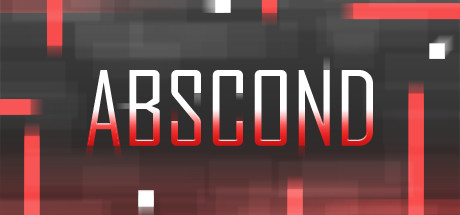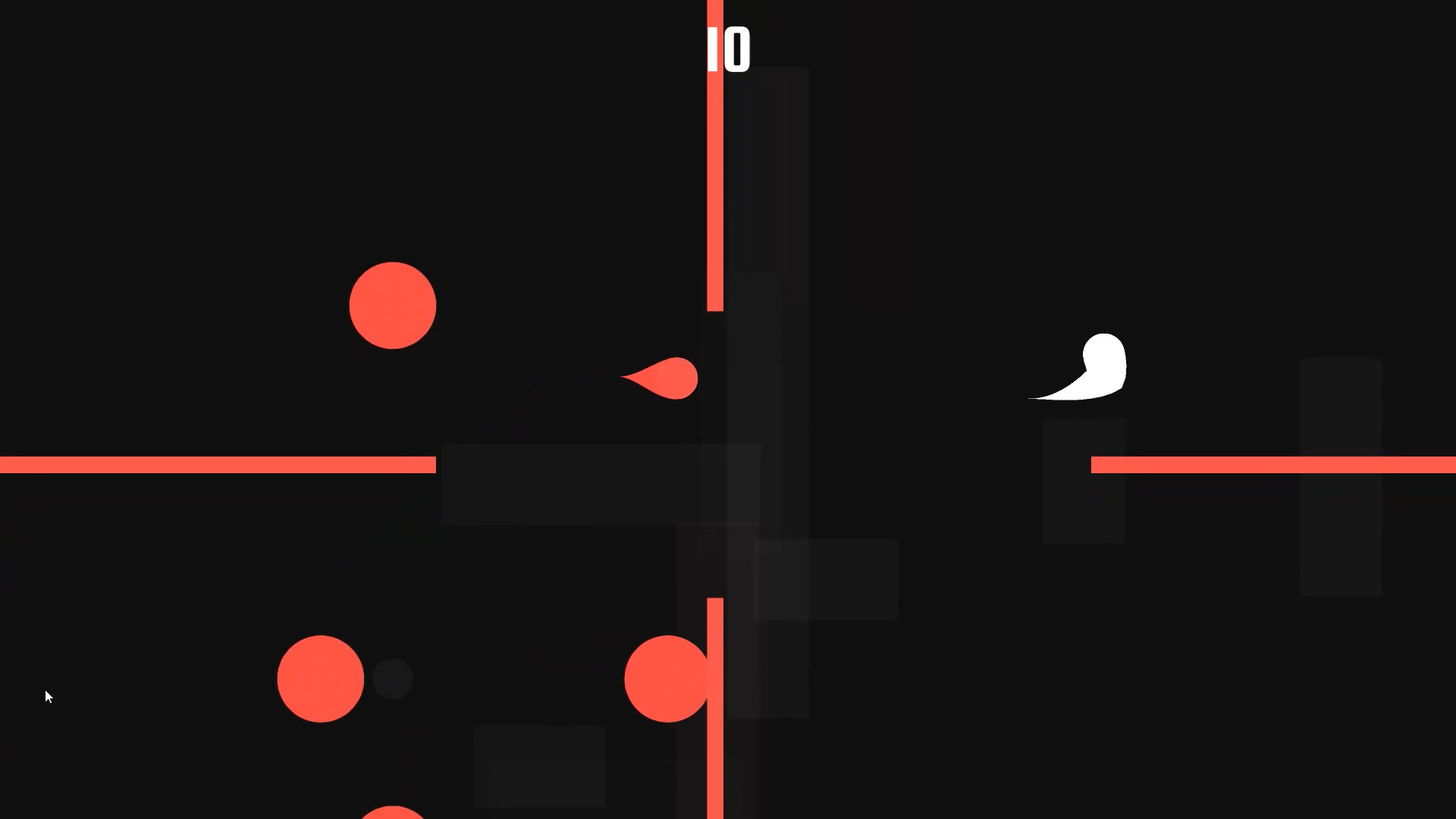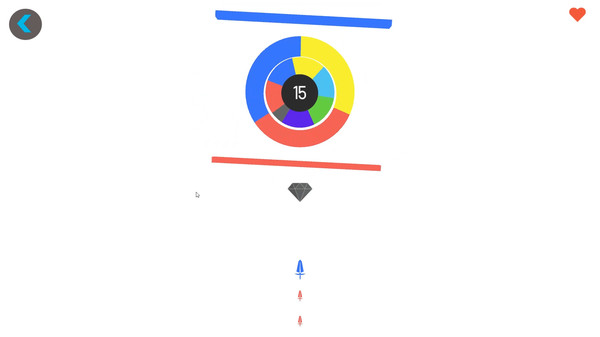Another one of these games that I do not remember purchasing. However, Steam remembers it as September the 30th of 2019, and I will take its word for it.
But, this is also another one of these games I will tell you to steer clear of, and this time it’s not because the game is bad.

So, here I was, probably on a shady website or browsing Fanatical Bundles. If I’d seen this game on its lonesome, outside a bundle, I would not have bought it. It came in the bundle regardless, and as part of my “I need to get through my massive backlog of games” effort on Twitch, I played it to give it a go.
About this time I was thinking, “Wow, this game cost £0.99, and it’s not bad.”
I’m zipping about in this simple, and minimalistic, but challenging, nonetheless, game, and it’s pretty damn good.
Still not groundbreaking or amazing, but nothing like the other shovelware on Steam which they let pass through these days.

Low and behold, I don’t need to look very far, and I find that this game is an asset flip, complete and utter plagiarism. The developer of this game is claiming this game as his own when the rightful maker made this available on Unity.
Here is the Unity: https://assetstore.unity.com/packages/templates/tutorials/avoid-82067
Here is their website: http://thatgamesguy.co.uk/
There are pros and there are cons, but Abscond is not this developer’s game. So, there are only cons here, which are:
“Dev does not know how to make a game” / “Dev is too lazy to make a game by themselves.”

So, what do we do now?
I’m downright refusing to acknowledge the “developer” as the creator of this game, and left with nothing to gripe about.
Things like this do leave me to be curious, however.
If a “developer” on Steam, is willing to get free assets from Unity, not alter the game in ANY manor and attempt to sell it passing it off as their own… will they benefit?
As it stands, Steam charges the developer $100 per game put through the Steam Direct program, meaning that as soon as a developer puts it up, they are $100 down. Unless you have lots of expendable cash, it’s not money you’d get rid of without being completely certain that what you’re doing is worth it/profitable.
So, the developer, XiNFiNiTY Games, takes a free asset bundle and sells it on Steam without further modification.
— $100.
If you’re a nerd like me and have Augmented Steam and SteamDB browser extensions, you will be given some useful information, but I’ll touch on that in a second.
Looking at the initial data of the game that the regular Steam user gets, you can see that the game only has 9 reviews despite it being “released” in December 2017. You’d possibly think to yourself, “Fuck, maybe it’s just because it’s an endless, simplistic little arcade game that’s not had a ton of spotlight.”
Scrolling further down, you’ll see the usual thing of there being actually more than 9 reviews, there actually being 24, which is still not a great deal despite the game being released for 5 years.

The bigger majority of these reviews being negative, calling towards the simplicity of the game, low effort and not being worth the money being asked of it.
A couple of others, including myself, using these points others had made along with the fact that the game is an asset flip to point out why it was so ridiculous that it was paid for.
24 is still a small number, but thanks to my add-ons, you get a rough estimate of how many people actually own this game.

Now, as you can probably tell already by looking at the picture. 20k to 50k is not really that much of an “accurate number”, nor is it really all that accurate at all. It’s quite the ballpark range.
Okay… So let’s outsource this a bit, and try a different thing to guess how many people own this game.

Oh…
So, we have the same numbers from SteamSpy, but some huge numbers from PlayTracker. And honestly, on first viewing of that number it seemed unreal and did not want it to be accurate.
But concerning the number of reviews, and also looking at that third number (actually the first in the set, but the third that I mentioned), it looks a lot more realistic.
Therefore, on some basic maths, entirely ignoring a few factors such as Steam sales, discounts, and devs giving their keys away to bundle sites:
If SteamSpy’s upper estimate is correct, and 50k copies have been sold, then you’d be right to assume that they’ve pocketed $44,900. Which would be absolutely ridiculous.
Even going by the “Owners By Reviews” lower estimate it would still mean that the “developer” made a net profit of $1340, which is still disturbing considering that this is not even their content.

So, looking a bit further into this game, on various blogs, I happened upon a very useful site, or maybe I found it useful as it provided me the information I wanted to see. (Rather than the news I wanted to hear).

A site known as Game-Stats that has a lot of information on games had something more in mind of what would’ve been earned by the so-called developer. Fair enough though, despite being a lot more realistic and what I’d had in mind, it was still unfortunately above the $100 they had to pay to release “their” game.
Meaning, at the end of this (if this website’s more realistic looking evaluation of the revenue is correct) they still gained $70 from essentially stealing someone else’s work and slapping a different name on it.
Meaning, if anyone wants to almost double their money, just steal someone’s game and slap your name on it and pop it on Steam, they won’t do anything about it. (obvious sarcasm)
Hi, I’m not finished yet.
So, this “developer” can yoink practically an asset pack from Unity, not change anything about it and claim it as their own, gaining almost double their money back.
What if this is not the only time they’ve done this?
Or at least, that’s a question that I start to ask myself because I’m a weird one like that and apparently have too much spare time, despite never seeming to have any at all.

XiNFiNiTY Games have 22 games to their name, 6 of which being DLC (Downloadable Content), so we can bring that number down to 16. One of the first-ever games, of which being “Infinity Wings – Scout & Grunt” actually gathered enough reviews from people to generate an average audience score, which is not a good one.
What the more early games of XiN have in common is that they’re not the sole publisher of the game, and that OtakuMaker SARL are the ones publishing instead. These games also still not getting great receptions, but looking and seeming to be more fully fledged games than the Abscond rip-off.
The first one that we actually take a look at is another game with a very similar thumbnail to Abscond (in fact, they all are very similar looking in terms of simplicity).
Spinning Around is a basic game where you have to fly your Spaceship into the correct colour, while the colour position that you have to fly through changes.
You’ve all seen someone playing a mobile game with this concept.
This is another blatant rip-off, another asset bundle ripped from the Unity Asset store, a different title slapped onto it and published on steam as their own content.
What is the net profit that site predicts this time? $320.

Okay, let’s try another one. Infinity Trip.
Another unity asset flip, as the real developers can be seen right here.
How much is their estimated return? $56.
Okay, thank goodness, nearly everyone reviewing this one knew that it was an asset flip immediately. Must be a more popular asset bundle than the rest.
- Trigonometry? Probably Fake. Net Revenue $340.
- Jump! Jump! Jump!? Likely also fake. Net Revenue $56.
- Infinity Escape? 100% Stolen. Net Revenue $110.
- Stellar Warrior? Phone-game esque, so most likely also stolen. Net Revenue $0 (Seems improbable, yet there are no good reviews at all about this game).
- Lozenge. Definitely fake. Net Revenue $94.
- Dialing? Would not put it past them to steal this, but can’t find an original. Net Rev $18.
- Genius Calculator? It is apparently an asset flip, but I can’t find the source. Net Rev $260
- Outline? An obvious offender. Net Rev $130.
- Cubic Color? More than likely. (Can’t find original source). Net Rev $37.
- Color Circle? No evidence as far as I can see, but it looks exactly like what they’d usually steal. Net Rev $75.
*All “Net Revenue” are estimates made by the Game-Stats website.
So, from the asset flipping, player scamming side of things, we have 13 games that have possibly been attained from the unity asset store. All of which have been turned around, had a new name slapped on top of the old one and put on Steam to be sold as “their” game.
13 x $100 = $1300
So, the devs have spent this much putting the games on Steam, but did they get back what they spent?
$75 + $37 + $130 + $260 + $18 + $94 + $0 + $110 + $56 + $340 + $56 + $320 + $170
When you look at it, there are plenty of small numbers that are below the $100 threshold, but a few big numbers.
The gamble was really risky, as not a lot of their flips generated a profit, but the ones that did generate a profit only did so marginally in comparison to indie games that have any real effort.
Estimated Net Revenue for all (possible) asset flip games being $1,666. (*Gasp* 666)
Provided they paid for each game to be put on Steam, they presumably made a $366 profit, assuming the website is more accurate than the others.
This is not amazing, and taking a close look at their profits from each game, if Trigonometry hadn’t done as good as most of the others, they would not have as much of a profit as they do now.

But realistically speaking, however, what if this hadn’t stopped in 2018 and this developer kept selling asset flips?
Also bringing to attention, these games are still live on the Steam store, waiting to be bought. This “developer” can still obtain money right now from any unsuspecting buyer.
This slow gain of $366 has happened over the course of five years, acting like an offshore bank account or investing in a really slow-moving stock, but it’s still there.
You can probably guess my opinion on the matter. I find it morally unethical, and completely condemn this as while it’s still apparently legal, it’s harmful to the image of “indie”.
Not only that, but it damages the reputation and the credibility in the eyes of players towards other games that use bought assets for their games, such as PUBG.
Many indie game devs either do not have the skill, time, or the know-how to pursue making their own assets. Buying these asset bundles and game templates are what gives these developers a head start and a clear direction of where to improve from, or what to use, or how to use what they have.
Unlike these innocent game devs who use these assets as intended, XiNFiNiTY take templates as they are, change nothing, and slap their name on it.
Call this whatever legal term you wish, forgery, plagiarism, theft.
At the end of the day, it’s certainly a scam. You can get the tools to make these games for free, you get the templates for free (sometimes paid, but a lot XiNFiNiTY took were free or cheap), and “make” exactly what XiNFiNiTY copy and pasted yourself.
If you come across any games by XiNFiNiTY Games, then please do not add to their pool of money that should’ve been distributed to the real developers.
There are many other better indie developers, and there are many other better indie developers that actually have done the work they are advertising.
The amount of time and research put into this topic could’ve been a lot more, and I would’ve gone further into this if I had the energy. However, this was made a lot quicker due to two characters on Steam. The first being Zaxtor99 TTV, whose review first alerted me to such a thing as an asset flip. I’d always suspected as such, but after playing Abscond and then being shown where it originally came from, I was gobsmacked that someone would actually do this. Secondly, to the person behind the curator called Sturgeon’s Law, Obey the Fist!, who almost had every link to all the assets that were stolen.
I’ve also now read a whole Wikipedia article on “Asset-Flips” and an article/interview with Bennett Foddy and am a little asset-flipped out now.
Edit: I’ve been made vaguely aware that it’s somehow possible for developers to cheat the $100 entry fee for releasing a game on Steam by dropping more than one game at a time (or something). I’m not fully versed in this knowledge and can’t find any info on it at the moment. But it does, however, change a lot of the “predicted profit” if these “developers” managed to do this too, I, however, will probably look at this another time.


Leave a comment